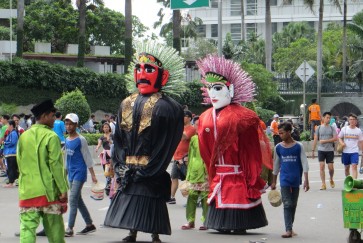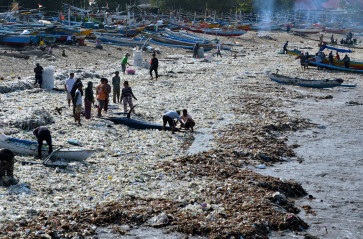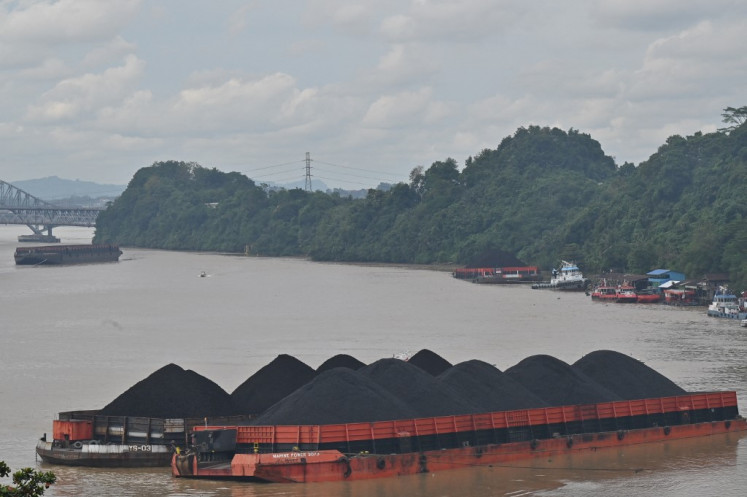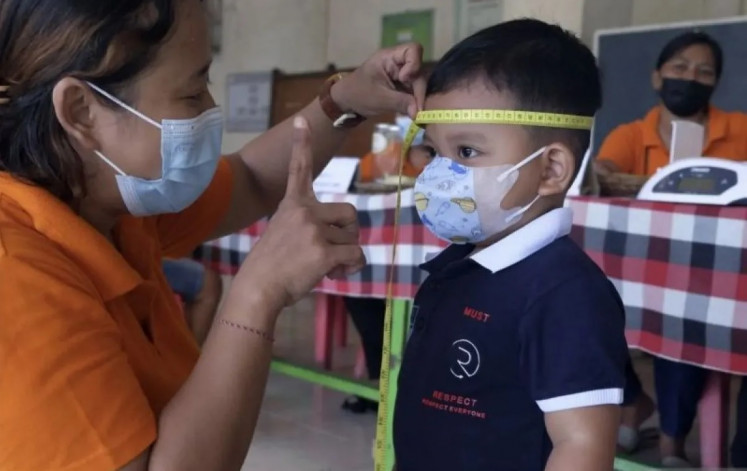Silk Road Economic Belt - a journey without end
Finally, the veil surrounding the Belt and Road â a collective term for the Silk Road Economic Belt and 21st Century Maritime Silk Road â has been lifted
Change text size
Gift Premium Articles
to Anyone

F
inally, the veil surrounding the Belt and Road ' a collective term for the Silk Road Economic Belt and 21st Century Maritime Silk Road ' has been lifted.
An 8,300-word document released by the National Development and Reform Commission (NDRC), Chinese foreign affairs ministry (MFA) and the commerce ministry outlined the plans by the Chinese government to chart the highly ambitious vision.
For one, China places great emphasis on joint effort and common development as the basis of cooperation with countries along the route.
While the document illustrated the Belt and Road in words, Chinese state-owned Xinhua news agency published a map that clearly indicated both routes.
The land-based trans-Eurasia Silk Road Economic Belt begins in Xi'an in the inland province of Shaanxi, and then heads west to Gansu and Xinjiang provinces.
From there, the route joins Central Asia ' Kazakhstan, Kyrgyzstan, Uzbekistan and Tajikistan ' and Iran, before it stretches west to Turkey.
It then runs through European countries such as Bulgaria, Romania and Ukraine to reach Russia. From Moscow, the path continues southwest to Germany and the Netherlands, and then heads south to Venice, Italy, the meeting point of the Belt and the Road.
On the other hand, the 21st Century Maritime Silk Road attempts to link China's southeast coastal region ' Fuzhou and Quanzhou in Fujian province, Guangzhou and Zhanjiang in Guangdong, Beihai in Guangxi and Haikou in Hainan ' to Europe through the South China Sea and the Indian Ocean in one route, and the South Pacific in another.
From Hanoi, Vietnam, the Road heads to the South China Sea and then the Strait of Malacca to reach Kuala Lumpur. It then joins Jakarta, Indonesia, before crossing the ocean to Colombo, Sri Lanka, and Kolkata, India.
The path then swings west to Nairobi, Kenya, and continues north into the Red Sea and Mediterranean Sea to reach Athens, Greece, before joining the Belt finally in Venice.
With building infrastructure and expanding the trade network as the backbone of the extensive project, China is also striving to boost political ties, connectivity, cultural exchanges and cooperation in various fields with the countries involved.
Ten thousand government scholarships and joint applications for World Cultural Heritage sites are among the plans.
In a press briefing last week, Ou Xiaoli, the director-general of the Western Region Development Department at the NDRC, said China wanted to attract more countries to respond to the initiatives and get rich together by riding on China's growth.
'The Silk Road is not exclusive to China; it belongs to the world. In fact, the name was not invented by a Chinese, but a German.'
(Ferdinand von Richthofen, a German geographer, is said to have coined the term in the 1870s.)
Last year, China and countries along the Belt and Road recorded a trade volume of more than US$1.1 trillion, about a quarter of China's total trade.
China is aiming for an annual trade volume of $2.5 trillion with the countries in a decade's time, as announced by Chinese President Xi Jinping, but the action plan gave little insights on the specific projects to be undertaken together by China and the relevant countries.
'The needs of each country are different and dynamic. Together, we will study and plan (the projects) on the basis of mutual consultation and joint development,' Ou said.
The Road will first reach the Southeast Asian countries, a few of which have overlapping claims with China in the resource-rich South China Sea, including Vietnam, the Philippines, Malaysia and Brunei.
Yao Peisheng, former ambassador and former deputy director-general of MFA's European-Central Asian Affairs Department, opined in another press event that the existence of disagreement is not favourable to the Belt and Road initiatives, and all parties should seek to resolve territorial dispute peacefully.
But he was not all pessimistic. The Belt and Road, he felt, would also create the ambience that would be conducive to solving the dispute among the countries.
China's Belt and Road has reminded some of the New Silk Road Initiative launched by the United States back in 2011, which aimed at connecting Central and South Asia in the areas of the regional energy market, trade and transport, customs and border operations, and business and people-to-people.
Liu Jinsong, MFA's International Economic Affairs Department deputy director-general, said China was not looking at competing with other countries when rolling out its Belt and Road strategy.
'The United States' New Silk Road Initiative does not necessarily clash with China's Belt and Road; both can even complement each other. We can explore areas of cooperation,' he said.
India, meanwhile, also has projects along similar lines that are known as the Spice Route and Mausam.
In consonance with China's openness in welcoming all parties to be part of the Belt and Road, Chinese ambassador to India Le Yucheng recently told The Hindu that China was willing to link its initiatives with New Delhi's.
China's action plan did not spell out a time frame for the Belt and Road, noting that China and other countries will decide on the timetables and road maps among themselves.
'The Belt and Road is not something that can be accomplished in just several years,' Yao said.
'There is only a beginning; there will be no end point. (***)









